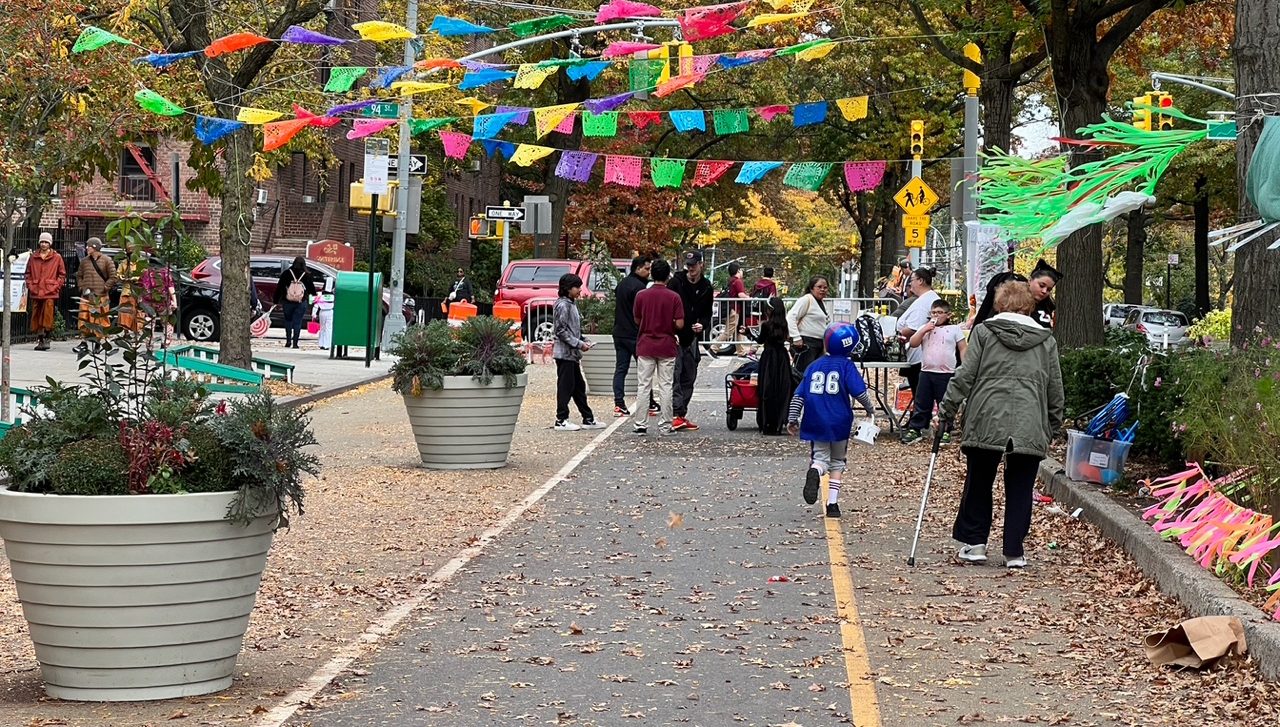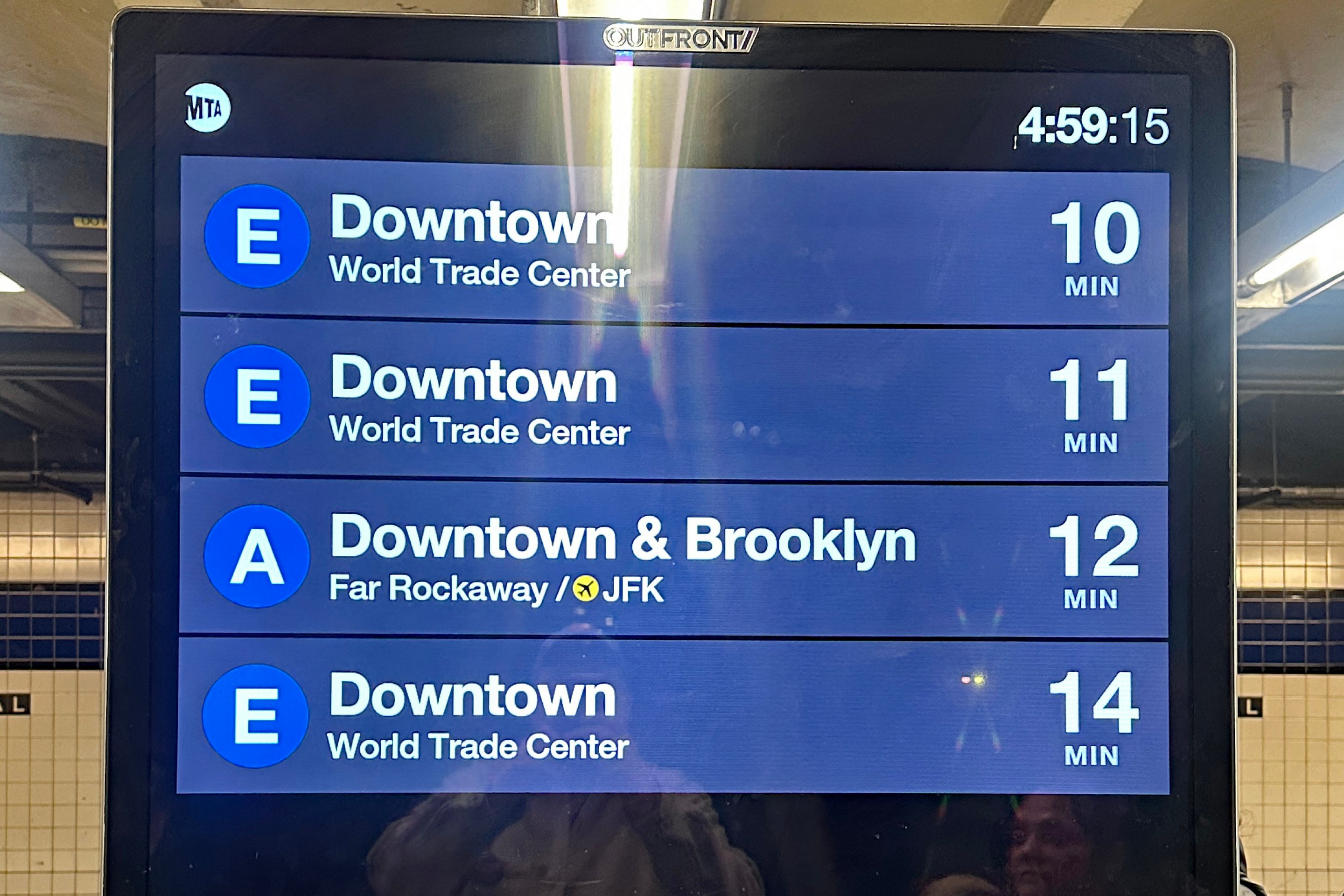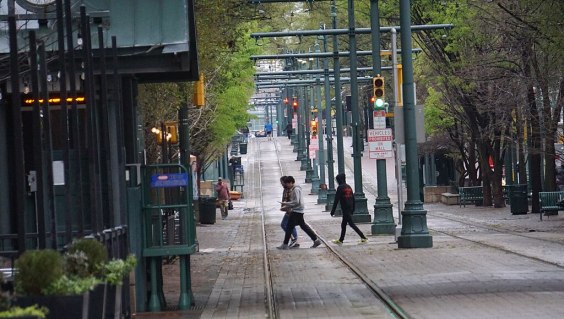Some reading ahead of tomorrow's big Transit-Oriented Development forum at NYU...

Public attention is focused on Atlantic Yards and condo towers under construction or planned from DUMBO to Long Island City, but the Brooklyn real estate boom is having subtler but equally profound effects on neighborhoods just outside the radar, and these changes are tremendously beneficial from a regional planning perspective.
The three block stretch of Schermerhorn Street from Smith to Nevins is a transitional area between the Downtown Brooklyn commercial district and the brownstones of Boerum Hill. This area has that partially vacant, faded-glory feel that you find in downtowns across the Rust Belt. There are some office buildings occupied by government and private social service agencies interspersed among way too many surface parking lots (highlighted, along with one multi-story garage, below).

I always thought it was odd that all these parking lots should be sitting on land atop a bigger subway station. The fact that so many parking lots offered cheap parking so close to shopping and offices no doubt encouraged many people who could travel by train to drive instead. That dynamic is changing.
Here is a picture of the area as it is today.

The north side of the street is better off than the south. Amid a few nondescript commercial buildings and bodegas are the Brooklyn Bureau of Community Service, a social service nonprofit, which has its offices at 285-293 Schermerhorn, the New York City Human Resources Administration's Food Stamp Program at Nos. 227-253, and an MTA New York City Transit office at No. 159. Amid the sea of parking on the south side, the only occupied building houses the New York State Department of Labor unemployment insurance office at 250 Schermerhorn.
But thanks in part to a renewed interest in city living, these parking lots are one by one being turned into residential and mixed-use buildings will feed passengers and revenue into the subway and lure people away from auto-dependent suburbs beyond the city's borders. Together, the buildings will create 602 homes.
On the middle of the three blocks, between Hoyt and Bond, an eight-story mixed-use building is extending the Dept. of Labor's street wall all the way across two thirds of a long city block. Known as State Renaissance Court, at 200 Schermerhorn Street, it is a beautiful building that closes up a big void.

The 157 apartments and five retail spaces in this building aren't occupied yet, but when they are, this block will be alive in a way that it hasn't been in years. This building was financed under a program set up in 2004 by the New York City Housing Development Corporation to encourage construction of buildings where people of different incomes live under the same roof. According to the building's website, it will have eight apartments reserved for very low income households, 39 apartments reserved low income households, 31 apartments reserved for middle-income households, and 79 apartments to be rented to the households who bid the highest.
By housing people of different incomes, the building is a microcosm of its immediate neighborhood, where "market rate" apartments are under construction next door to apartments for the formerly homeless. One block west of State Renaissance Court, a crane and pile drivers are in place to begin erecting the frame of the Schermerhorn House, a 217-unit apartment building.

According to Common Ground Community, the nonprofit social service organization that will manage the building, half of the apartments will be reserved for "formerly homeless and special needs individuals," and the other half will be reserved for low-income working actors and artists.
Just behind Schermerhorn House, and like it built on a former parking lot, are 14 three-story townhouses at 267-285A State Street. These compliment and reinforce five adjacent, nationally landmarked brownstones at 291-299 State Street that managed to avoid demolition and for many years were the only structures to stand on this entire block. From an urban design perspective, it's hard to beat these townhouses. You can be the judge of whether the new or the old are preferable architecturally.

Rounding out our development tour are three more residential buildings. The first, at 189 Schermerhorn Street (scroll down about three-quarters of the page), will rise back to back with 296 Livingston Street, for a total of 214 apartments. And two blocks south is The Smith, a condo tower getting its outer skin at 75 Smith Street, from State Street to Atlantic Avenue.
All these buildings together are knitting together the gap that used to exist between Boerum Hill and Downtown Brooklyn, in a socially responsible, environmentally friendly way. It's great to see this type of urban growth occur.
Here is a bird's eye look at the bad old days.






